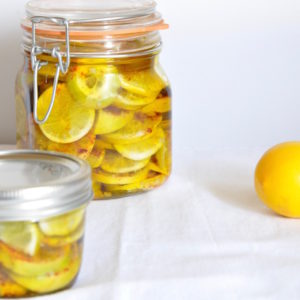Pork Hand Pies with mismatched pictures
So, yeah, it’s been entirely too long. I have committed the blogger’s cardinal sin of not posting.
I could give all the reasons, but you read the news, don’t you? And the news, it’s very bad. Read it enough, and you will become depressed. Seriously depressed. And if you are me, this depression will become migraine. And if your migraine medication has been backordered since July, well, it’s difficult to produce cheery blog posts filled with appetizing recipes and pretty pictures.
About those pretty pictures: somewhere in there I got a new camera. The past month, it’s rather a blur. The migraine medication eventually arrived, but as I said: blur. Anyway, I was figuring out the camera, and was a total mess, and so are the pictures.
Rather than reshoot and post in 2021, I’ll depart from the material at hand with better pictures having nothing to do with the recipe. Because really, we all know what pie-like things look like, right?
Right.
So here we go.

—
I am generally hopeless at preparing dough-encased foods. Separate the components–wrapper, some kind of filling–and all is well. But the moment I put them together, game over. The wrapper is thick and doughy, the filling overcooked, and I am wilted.

Partly this is the nature of the food: be it a savory dumpling or larger sweet pie, the dough-wrapped package is a multistep affair. Filling and wrapper must be made. Having prepared two recipes, they must now be assembled–wrapped, pleated, or otherwise closed. The package must now be boiled, baked, fried, or somtimes all three. Such cooking requires time, patience, and energy. These are qualities I rarely possess simultaneously.

But I keep trying, (to make dough-filled things, not to have three qualities at once) because everyone loves this sort of food. The English have their pasties, the Asians an extensive repertoire of delicious dumplings. Jews make kreplach. Russians are justly famed for pelmeni. Mexicans and Central Americans make empanadas.

As this pork hand pie is inauthentic to anything but my increasingly insufficient kitchen, I fretted over naming it. Pork Hand Pie seems most descriptive. That said, those who eschew pork may fill their pies with mashed potato, ground chicken, ground beef, or finely chopped greens.

This dough is a dream to work with: easy to throw together and generally good natured.

I am happy to eat hand pies without accompaniment, but at this time of year (I write in September 2020) a tomato salsa is nice. Or try a yogurt dip with lemon juice, garlic, and minced scallions. I have recently discovered Indian chaat masala seasoning, an addictive mixture I’ve been adding to almost everything.

Pork (or chicken, or potato, or greens) hand pies make a lovely lunch or dinner with a light soup or green salad. They’re delicious in all but the hottest weather, and may be fed to anyone. (Provided you use gluten free dough, or make it kosher, you know what I’m saying here….)
Pork Hand Pies
See notes for filling variations
yield: 8 pies
Prep time: about one hour, which includes 25 minutes baking time
I am indebted to Barbara Tropp’s Mastering The Art of Chinese Cooking and Mollie Katzen’s Still Life With Menu Cookbook for help with this recipe’s measures and cooking times.
For the filling:
1/4 pound/4 ounces/115 grams ground pork
1/4 teaspoon salt
1/4 teaspoon black pepper
1 scallion, minced
1 garlic clove, minced
1 small stick celery, thinly sliced (see notes)
optional additions:
pinch hot red pepper flakes
1 tablespoon parsley, chopped
1/4 teaspoon Worcestshire sauce
For the dough:
2 cups/16 ounces/454 grams all-purpose flour
1/2 cup/four ounces/115 grams water
1 teaspoon salt
additional flour and water, for the counter and as needed to form the dough.
Make the filling:
Mix filling pork, salt, pepper, scallion, garlic, celery and any optional additions in a medium bowl. I use my clean hands, but you can use a wooden spoon. Set aside.
Preheat oven to 350F/180C
Line a large, heavy baking sheet with parchment paper, a silpat, or tinfoil.
Make the dough:
in a large bowl, mix the flour, water, and salt.
Turn dough out onto a lightly floured counter and knead until it coheres. You may need to add more flour or water, depending on the weather, your flour, and your kitchen. The dough should be soft and pliable without being sticky.
Using a sharp knife or bench cutter, cut dough into eight pieces. Roll into eight rough balls.
Let them rest for a few mintues while you wash up.
Assemble the pies:
Using a rolling pin, roll each ball out to about five inches/12cm. Aim for a roughly oval shape.
Using a two-tablespoon measure, place a mound of filling on the lower half of the dough oval, leaving about 1/4 inch/.60 cm clear edge all around.
Fold the dough over and pinch shut firmly. Transfer to the baking sheet.
Once all your pies are on the baking sheet, place it in the oven and bake about 25 minutes.
You can flip the pies over at half-time, or you can just leave them be. They’re ready when dough browns lightly and is crisp to the touch. If you aren’t sure, cut one open to see if filling is cooked through.
Give the pies a moment, then peel carefully off the foil. Use oven mitts, as hand pies are very hot and stay that way for some time; please warn your diners.
Pork hand pies are lovely by themselves. You may also serve them alongside salsa, yogurt sauce, or sour cream. With salad and/or soup, they’re a meal.
Pork hand pies keep, refrigerated in a lidded container, up to four days. Reheat in low oven or toaster oven.
You can freeze baked pork pies, but it’s better to freeze them unbaked. Once you’ve formed the pies and laid them on the baking tray, slide the tray into your freezer for about an hour, then remove the pies, wrap them in foil or place them in a ziploc-style freezer bag. They’ll be good for about two months. To bake, place in 350F/180C oven and bake from frozen, allowing about ten minutes extra baking time.
Notes:
I learned recenty that celery may be frozen. It does wilt, making it useless for salad, but it’s great for cooked applications.
After lining baking trays with foil, baking parchment, butter, and nonstick cooking spray, I recommend using foil.
Note: you want two tablespoons filling per pie.
Hand pie filling alternatives:
Ground or finely chopped chicken or beef. If you are using cooked meat, make smaller pies and check them after 15 minutes. Otherwise you risk a dry filling.
Make meatless pies using mashed potato or any combination of greens. For mashed potato, bear in mind it’s difficult to find the perfectly sized potato, but who complains about leftover mash?
Season the potato rather highly; I used sumac, a pinch of ground red pepper, salt, black pepper, a minced scallion, and a finely grated garlic clove. For the liquid element, creme fraiche, milk, sour cream, and/or butter are all delicious. You want a mash that’s moist without being runny.
For greens, wash and shred any mixture of chard, spinach, beet greens, dandelion, whatever. Add a minced garlic clove, minced scallion, salt, and pepper. Saute briefly in a little oilve oil, but don’t completely cook. Drain, then wrap in a clean dishtowel or paper towels to get the greens dry.
Other seasonings to consider: sumac, coriander seed, cumin, the hot pepper family, and fennel.

rip rbg




